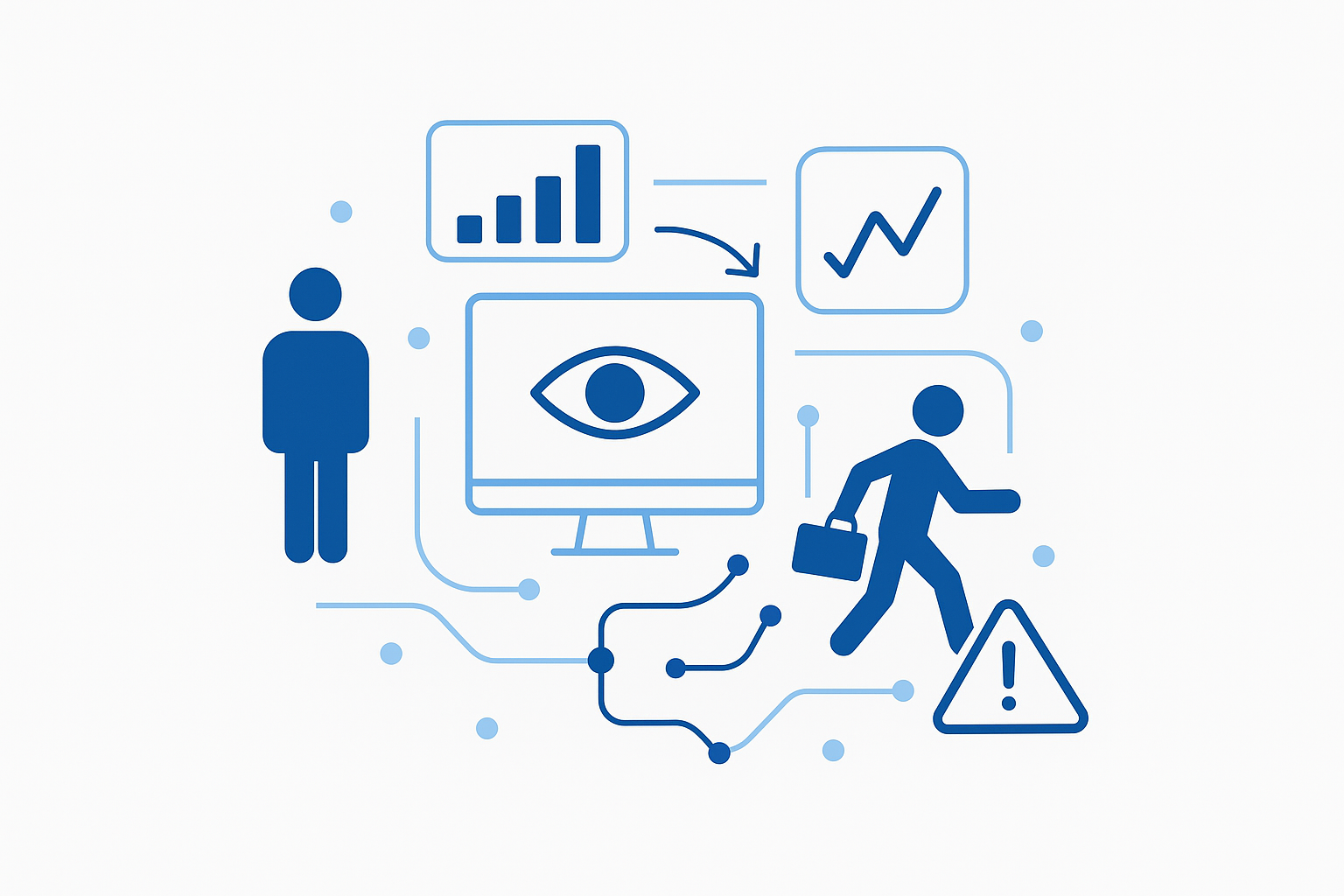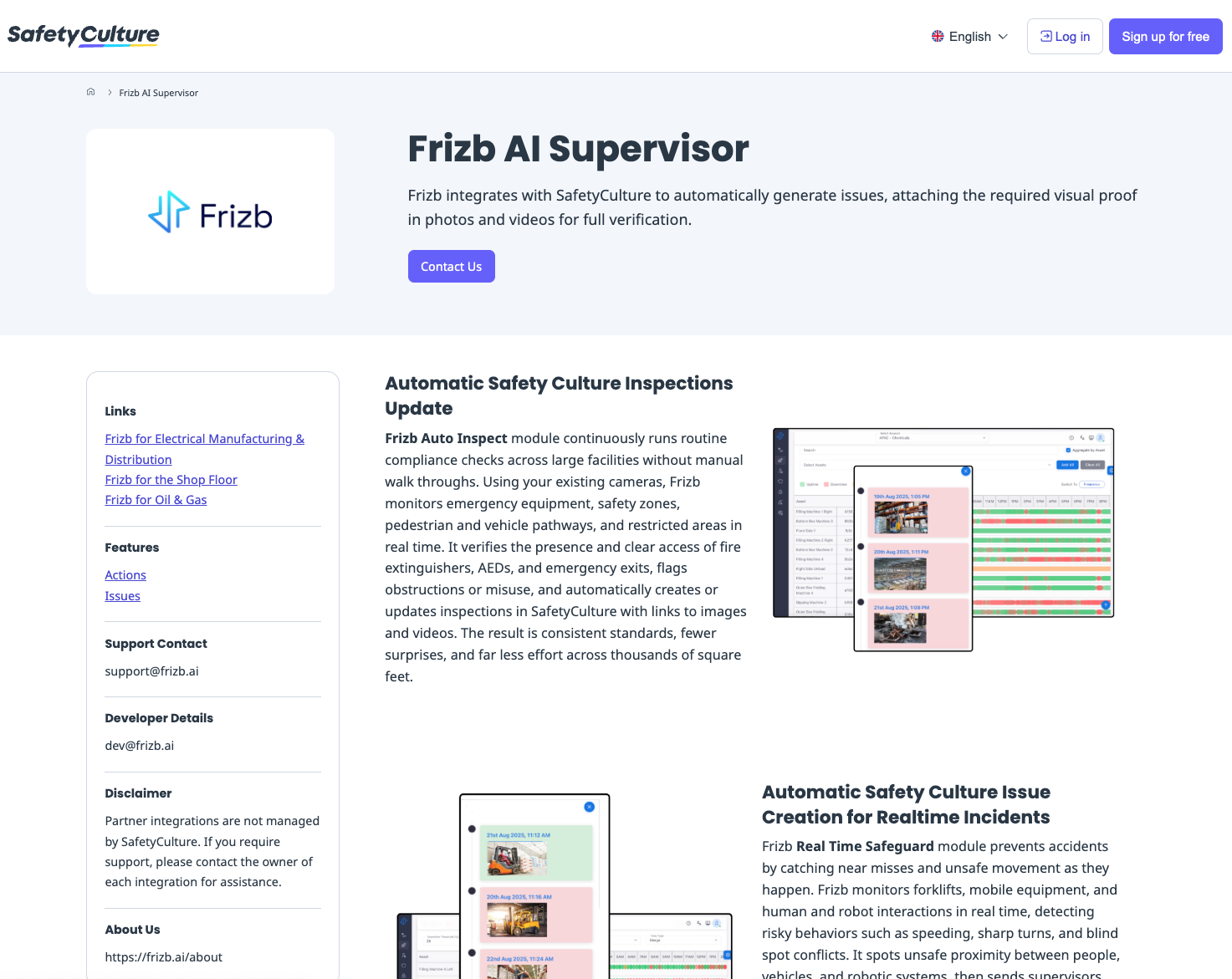The Comfort of Baby Rules
When people first set up computer vision, they usually start small:
- “Tell me if someone walks into this zone.”
- “Alert me if a helmet’s missing.”
These are baby rules. Easy. Binary. A little dopamine hit when the alert fires.
But baby rules are like putting Post-it notes all over a messy desk. You know where things are, kind of. But you haven’t actually cleaned the desk.
The leap comes when you stop playing whack-a-mole with alerts and start asking: what patterns are hiding underneath?
Tactical vs. Strategic
Tactical monitoring is:
- Helmet missing → alert.
- Unauthorized entry → alert.
- Someone lingered too long → alert.
It solves compliance problems. But it doesn’t explain why problems keep happening.
Strategic monitoring is about context.
- Instead of “alert: FR vest missing,” it’s “why do FR vests get skipped during welding arcs in hot conditions, and what can we change. Gear, cooling, schedules ? to make adherence realistic?”
- Instead of “crowd in corridor at 3 PM,” it’s “what material are people waiting for, is there a docking bottleneck, and could shifting yard flow fix it?”
Tactical rules tell you the what. Strategic patterns tell you the why and help you figure out what-to-do-about-it.
Why Strategic Is Hard (But Worth It)
Strategic monitoring sounds glamorous. But it’s messy, because…
- Normal is slippery. Is twelve people in a corridor a hazard, or just shift change?
- Deviations aren’t the goal. Every deviation = homework. If welders ditch FR vests during arc activity, that’s not an alert. It’s a prompt to rethink PPE or scheduling.
- The system has to evolve. Today’s “deviation” might be tomorrow’s baseline. That reflects Human and Organizational Performance (HOP) thinking: people adapt, systems drift, and work as done often looks different from work as imagined. A strategic approach embraces this reality instead of fighting it, using deviations as learning signals to redesign processes rather than blame people.
But the payoff is big: you don’t just catch things, you design operations that run smoother, safer, and smarter.
The Blueprint Shift
Here’s the quiet magic: after enough cycles, the noise fades and what you’re left with is a blueprint.
- What “healthy” flow looks like hour by hour.
- What staffing balance keeps dwell from spiking.
- What PPE adherence is realistic under high heat welding.
- What yard activity is expected at peak hours.
That blueprint is no longer about “catching mistakes.” It’s a living model of how the floor should run.
Going Beyond Counting Heads
Once you start looking at patterns, the fun begins. You can combine signals:
- People + Objects → forklifts in aisles with pedestrians.
- People + Processes → acid handling without PPE.
- Objects + Time → pallets blocking exits too long.
- Risk + Context → FR vest adherence specifically during welding arcs, not just whenever it’s hot.
That’s where computer vision moves from surveillance to strategy.
What It Looks Like
- Tactical: “Crowding in corridor.”
- Strategic: “Corridor crowding at 3 PM is linked to delayed raw material deliveries. Fix the docking schedule.”
- Tactical: “Worker missing FR vest.”
- Strategic: “FR vest adherence drops 40% during arc welding in high heat. Cooling stations or ventilated gear needed.”
One is noise. The other is a plan.
The Takeaway
Computer vision starts with babysitting rules. But the value explodes when you zoom out: spotting patterns, finding root causes, and building a blueprint of healthy operations.
That’s when your system stops being an alarm clock and starts being a strategist.









